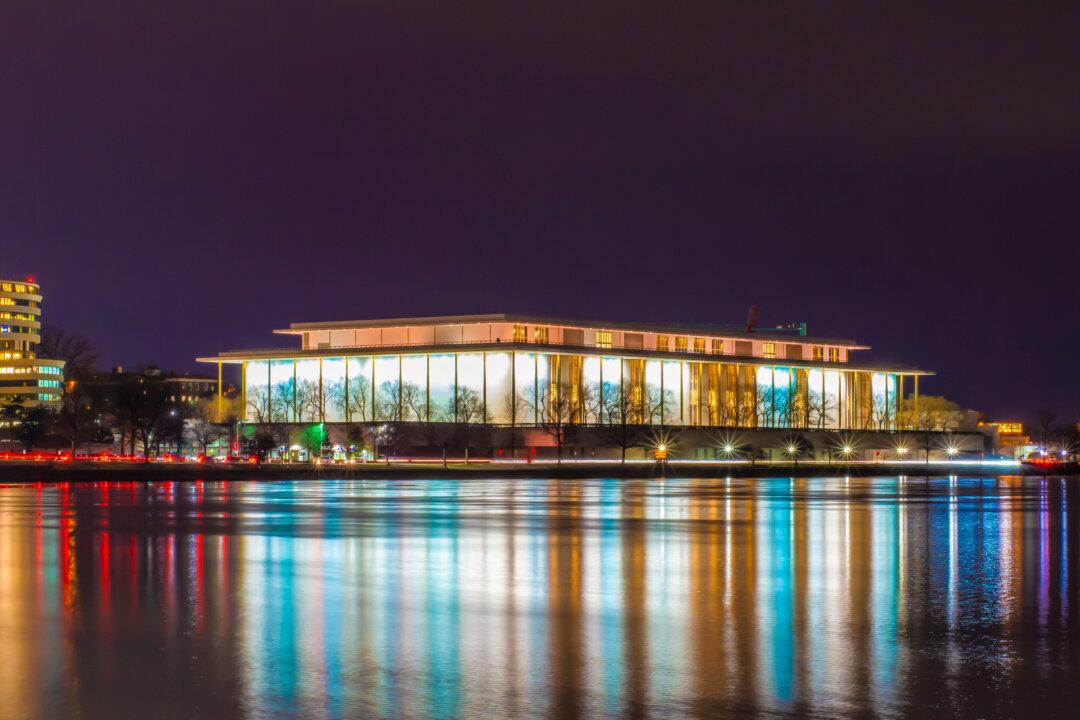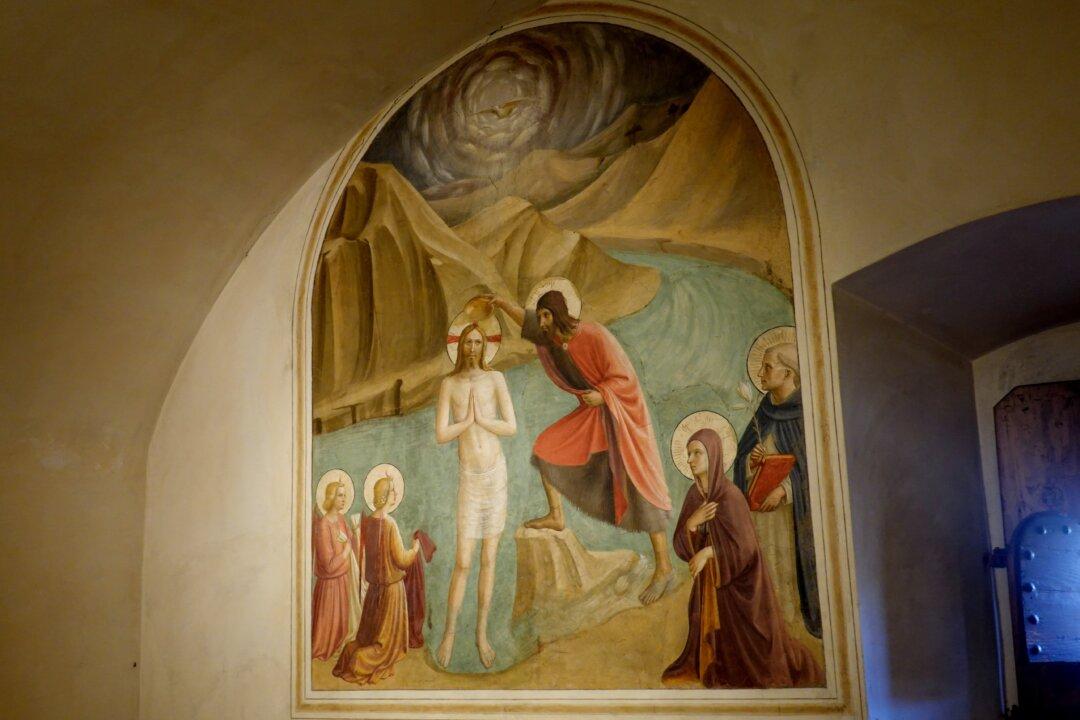Five years after his second trip to Ecuador, American landscape painter Frederic Edwin Church (1826–1900) painted the volcano erupting at sunrise. As the sublime, romantic composition unfurls in front of us, our eyes are first drawn toward the fiery sun, which dramatically reflects off the river at middle ground. Surrounded by thick, gray smoke emitted from the volcano, the incandescent orb pierces the cloud of dense ash, casting a soft, warm glow on the landscape.
The rugged cliffs in the foreground are mostly still in pre-dawn shadow, but the crags blush as they catch the morning light. A roaring waterfall, white with froth, is partially tinted a rosy hue from the rising sun. As with many of Church’s paintings, a copse of trees with a pastoral scene at the left foreground is executed with careful attention to detail. Each leaf and branch is considered. As the landscape recedes into the distance, the resolution of the painting fades, becoming increasingly atmospheric.






